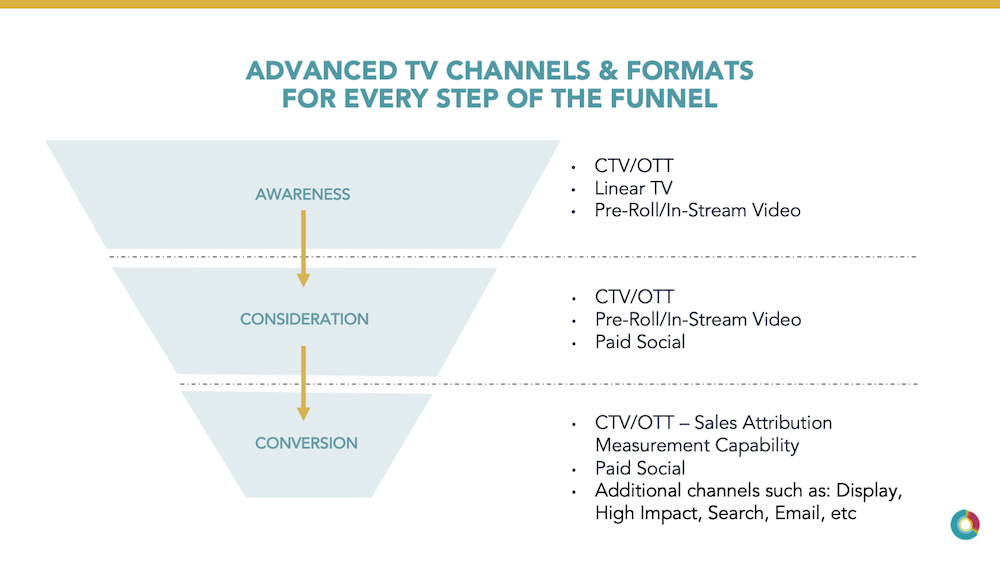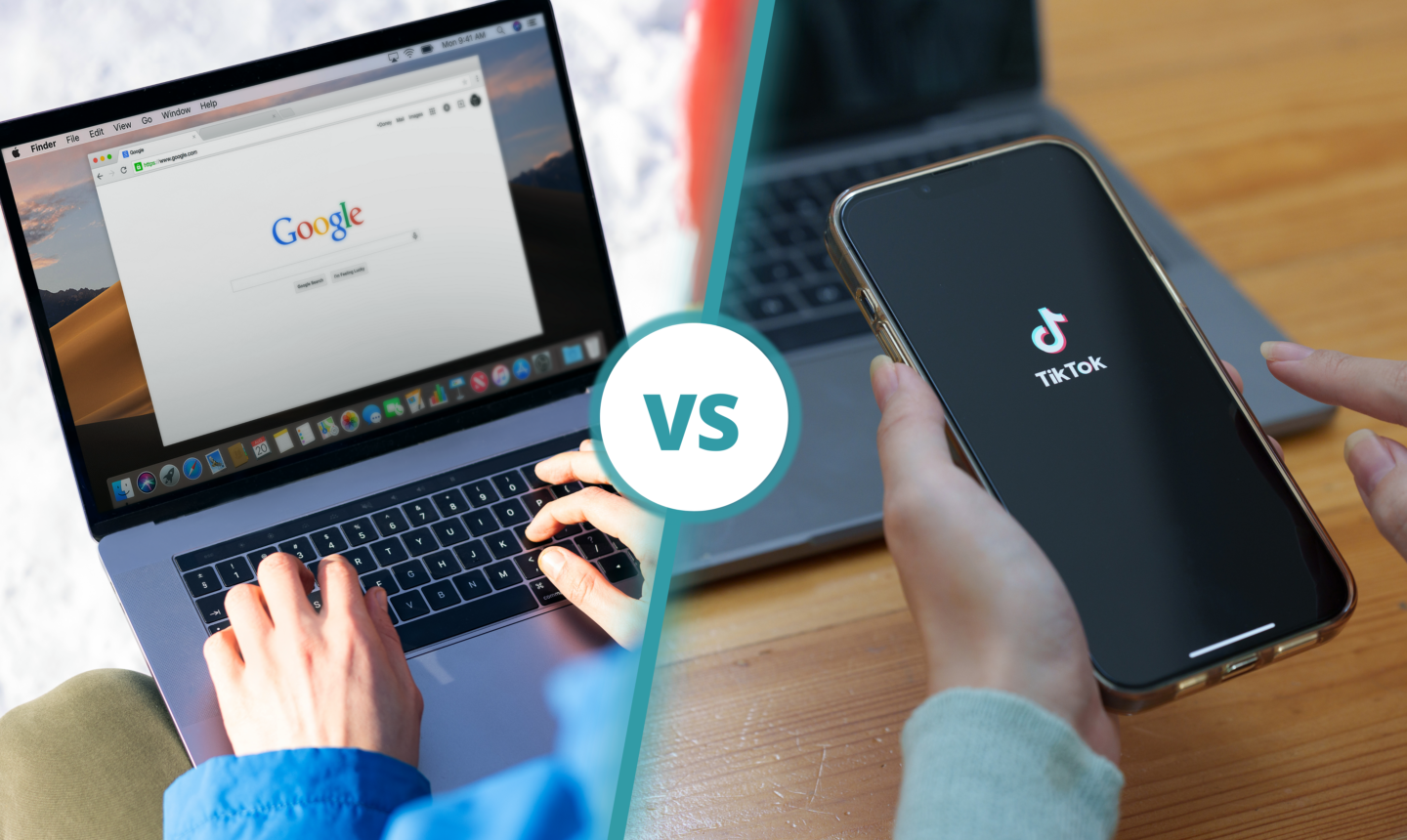Advanced TV in 2023
A Digilant Get Smart Series, Part 2: Align Ad Formats with Your Goals
In our newly released whitepaper, Advanced TV in 2023: The Trends, Technology, and Tools You Need to Succeed, we outline everything advertisers need to know about the rapidly expanding and evolving video advertising landscape. Over the next few weeks, we’ll dive deeper into these trends and solutions over a five-part blog series. If you missed part 1, outlining how to dig deep into data to reach your audience, check it out here.
Download the full whitepaper here.
—
Today’s consumers are opting for streaming services more often, continuing cord-cutting trends, and severing their ties to traditional cable TV. As advertising technology works to keep up with consumer habits, better targeting across these viewing preferences entices advertisers to shift their dollars toward video ad campaigns. This is where Advanced TV, the umbrella term encompassing any advertising that occurs before, during, or after a video stream on the internet campaigns, comes into play.
With traditional broadcasts, the goal is to reach as many consumers as possible. Those who use streaming services have a different experience. By using a streaming service, you connect your TV (or laptop, phone, or tablet) to the internet. This connectivity provides robust data that allow you to segment and target your audiences with more precision. To the average consumer, ads may seem the same as they’ve always been, but that is not the case; ads are now targeted to individual households, giving you more control over your reach, budget, and results.
Why is Video Advertising Effective?
The future of video advertising is bright. Why? Simply put, consumers love video. It is the preferred method for consumers to interact with media. Let’s look at the numbers. Every week in February 2021, consumers in America streamed 143.2 billion minutes of video content. In February 2022, that number went up to 169.4 billion minutes. Today, 85% of American households have at least one streaming service.
So why is video advertising effective? It’s not just because people love it; it’s because people have so much access to it. Consider the following benefits of video advertising:
- More device options and streaming services to choose from for precise audience targeting
- More cost-effective than linear TV advertisements
- Allows for more personalization and interaction with your target audience
- Creates entertaining and memorable brand sentiment
- Provides multiple avenues to advertise through
- Generates revenue from increased market demand
It makes sense then that marketers should put more resources toward streaming platforms, advanced TV, and CTV because that is where the market is. Advanced TV advertising offers more precise targeting, which results in a higher ROI and allows you to meet consumers where they are instead of trying to get them to meet you. With marketing campaigns being so specific to the individual (or individual household), it is crucial that marketers wisely use their budgets to reflect this.
How to Get Started with Video Advertising
In the grand scheme of things, streaming services haven’t been around that long. Even so, there have been several improvements that directly benefit advertisers. As data tracking evolves, budgets can be spent more wisely, and marketers can utilize programmatic video ad spend.
The following guidelines can help you set effective video advertising strategies in motion and ensure you appeal to audiences that are adopting advanced TV.
1.Use the right format for your goals.
Consumers have more choices now in where they want to consume content. Concurrently, major streaming providers are working to keep up with the competition by adding ad-supported tiers, as seen most recently from HBO, Disney+, and Netflix.
With these two things in mind, it’s imperative to ensure your campaign is set up for success from the start by establishing which platforms or services are right for your brand. Some ad formats work well with CTV, while others are more suited to advanced TV. It’s your job as an advertiser to establish which of these options is most suitable for your campaign, however as a general rule of thumb, we recommend the following ad formats based on your goals:

2. Determine if you want clicks or completes.
Are you trying to get people in the door or trying to get them to stay? With consumers having an average attention span of 8 seconds, it’s an important question to consider. Even an extra 15 seconds might be too much for a consumer to sit through.
When establishing an Advanced TV strategy, consider the following:
If you want to drive clicks, it’s best to include a call to action at the beginning of your advertisement. While the goal may not be for the completion of ads, you do want to bring consumers in the door.
Conversely, video completion-based goals don’t need a call to action — they need a strong hook. These should be shorter videos, and make sure you choose the format that meets your desired end goals.
3. Take advantage of non-skippable ads.
With high completion rates, advertisers can reach viewers when they are already engaged with the content they are watching. You then have the opportunity to retarget those who have viewed the ad through site retargeting, paid search, etc. You can even place CTAs like QR codes in the ad for consumers to take action from the first impression.
4. Ensure you invest in ad-supported platforms.
Price is a top consideration for consumers when choosing a streaming subscription, and as more viewers flock to these platforms, you have an even greater opportunity to reach your target audiences. Ad-supporting streaming is an advertiser’s goldmine.
5. Determine if you should run programmatic or direct advertising.
While choosing to purchase ad space directly with a publisher, you have the benefit of receiving premium inventory with guaranteed ad spots for specific programs. However, limitations include limited reach and more expensive buys.
On the flip side, when purchasing programmatically, you have a higher reach with a lower minimum spend. But you may not have as much control over where your ads are placed. This is where you should refer to your campaign goals to choose the best options for your needs.
How Digilant Can Help with Your Advanced TV Strategy
Digilant is an omnichannel media partner built to help companies navigate the often-confusing world of digital advertising. We execute omnichannel strategies that are data-driven, actionable, and effective. Digilant comprises 100+ data-driven media minds and advertising technologists that can help bring your advertising campaigns to life.
If you’re interested in learning more about the future of video advertising or how advanced TV options can work for your business’s needs, contact our team. We’d be happy to help!
Looking for more information about setting up an Advanced TV strategy? Check out the third part of our blog series, “Implement Measurement Tools from the Start,” here.










